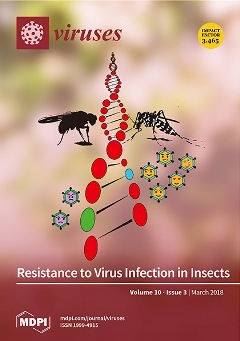The San Wu Huangqin Decoction (SWHD), a traditional Chinese medicine formula, is used to treat colds caused by exposure to wind-pathogen, hyperpyrexia, infectious diseases and cancer; moreover, it is used for detoxification. The individual herbs of SWHD, such as
Sophora flavescens and
Scutellaria
[...] Read more.
The San Wu Huangqin Decoction (SWHD), a traditional Chinese medicine formula, is used to treat colds caused by exposure to wind-pathogen, hyperpyrexia, infectious diseases and cancer; moreover, it is used for detoxification. The individual herbs of SWHD, such as
Sophora flavescens and
Scutellaria baicalensis, exhibit a wide spectrum of antiviral, anti-inflammatory, antibacterial, anticancer and other properties. The Chinese compound formula of SWHD is composed of
S. flavescens, S. baicalensis and
Rehmannia glutinosa. However, the effect of SWHD on the influenza virus (IFV) and its mechanism remain unknown. The aim of this study was to evaluate, for the first time, whether SWHD could be used to treat influenza. Results showed that SWHD could effectively inhibit influenza A/PR/8/34 (H1N1) virus at different stages of viral replication (confirmed through antiviral effect assay, penetration assay, attachment assay and internalization assay) in vitro. It could reduce the infection of the virus in a dose- and time-dependent manner, as confirmed by observing the cell cytopathic effect and calculating the cell viability (
p < 0.05). SWHD demonstrated better antiviral activity than oseltamivir in the evaluation of antiviral prophylaxis on influenza (
p < 0.05). The antiviral activity of SWHD may be related to its regulation ability on the immune system. Western blot, real-time polymerase chain reaction and indirect immunofluorescence assay showed that the expression of the four target viral proteins of the IFV (namely, haemagglutinin (HA), neuraminidase (NA), nucleoprotein (NP) and matrix-2 (M2)) reduced significantly (
p < 0.05). Moreover, SWHD (23.40 and 11.70 g/kg) significantly alleviated the clinical signs, reduced the mortality and increased the survival time of infected mice (
p < 0.05). The lung index, virus titres, pathological changes in lung tissues and the expression of key proteins of the IFV in mice also decreased (
p < 0.05). In conclusion, SWHD possessed anti-influenza activity. This work provided a new view of complementary therapy and drug discovery for clinical treatment.
Full article






